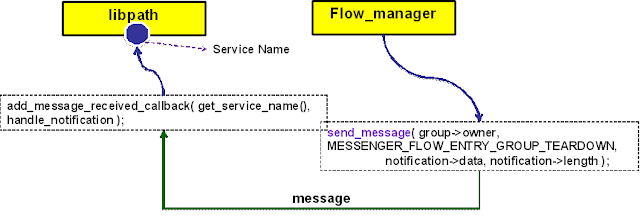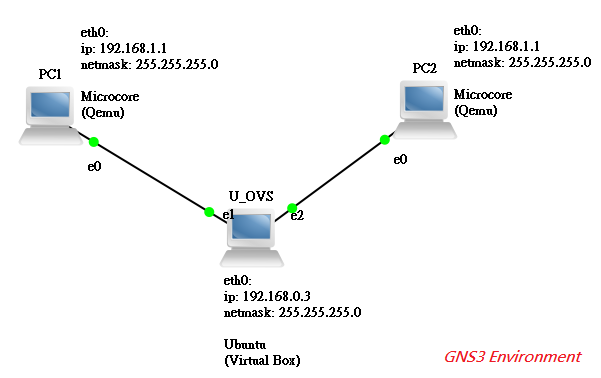The position of NW_SRC_MASK is from 8 to 13. If we want to setup a IP subnet mask as 192.168.1.0/24, we should give the value: 001000 (8 bits are wirdcarded). Another example, for instance, 192.168.0.0/16 (16 bits are wirdcarded), the value should be 010000.
/* Flow wildcards. */
enum ofp_flow_wildcards {
OFPFW_IN_PORT = 1 << 0, /* Switch input port. */
OFPFW_DL_VLAN = 1 << 1, /* VLAN id. */
OFPFW_DL_SRC = 1 << 2, /* Ethernet source address. */
OFPFW_DL_DST = 1 << 3, /* Ethernet destination address. */
OFPFW_DL_TYPE = 1 << 4, /* Ethernet frame type. */
OFPFW_NW_PROTO = 1 << 5, /* IP protocol. */
OFPFW_TP_SRC = 1 << 6, /* TCP/UDP source port. */
OFPFW_TP_DST = 1 << 7, /* TCP/UDP destination port. */
/* IP source address wildcard bit count. 0 is exact match, 1 ignores the
* LSB, 2 ignores the 2 least-significant bits, ..., 32 and higher wildcard
* the entire field. This is the *opposite* of the usual convention where
* e.g. /24 indicates that 8 bits (not 24 bits) are wildcarded. */
OFPFW_NW_SRC_SHIFT = 8,
OFPFW_NW_SRC_BITS = 6,
OFPFW_NW_SRC_MASK = ((1 << OFPFW_NW_SRC_BITS) - 1) << OFPFW_NW_SRC_SHIFT,
OFPFW_NW_SRC_ALL = 32 << OFPFW_NW_SRC_SHIFT,
/* IP destination address wildcard bit count. Same format as source. */
OFPFW_NW_DST_SHIFT = 14,
OFPFW_NW_DST_BITS = 6,
OFPFW_NW_DST_MASK = ((1 << OFPFW_NW_DST_BITS) - 1) << OFPFW_NW_DST_SHIFT,
OFPFW_NW_DST_ALL = 32 << OFPFW_NW_DST_SHIFT,
OFPFW_DL_VLAN_PCP = 1 << 20, /* VLAN priority. */
OFPFW_NW_TOS = 1 << 21, /* IP ToS (DSCP field, 6 bits). */
/* Wildcard all fields. */
OFPFW_ALL = ((1 << 22) - 1)
};




